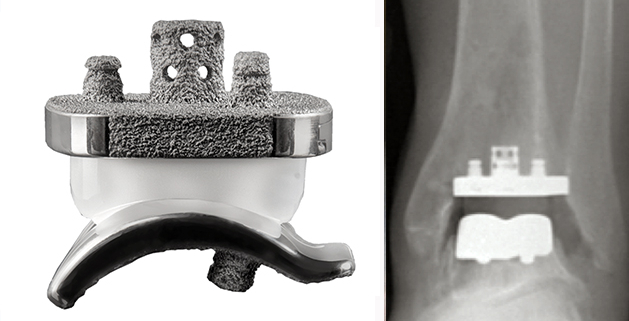
Ankle Replacement
Overview
Ankle replacement, also known as total ankle arthroplasty (TAA), is a surgical procedure that aims to replace a damaged ankle joint with an artificial one. This joint replacement has seen increasing popularity as an effective treatment for individuals suffering from end-stage arthritis in the ankle, deformity, pain, and loss of function. It is also an alternative to ankle fusion surgery, which could limit mobility.
Types
There are primarily two categories of ankle replacement designs: mobile-bearing and fixed-bearing implants. Mobile-bearing designs allow for some natural movement and flexibility, while fixed-bearing designs tend to be more stable but with potentially limited mobility.
Causes
The need for ankle replacement surgery often arises due to end-stage ankle arthritis. This can be caused by several factors, including:
– Trauma: Fractures or injuries that damage the ankle joint
– Osteoarthritis: A degenerative joint disease causing cartilage breakdown
– Rheumatoid arthritis: An autoimmune disease that causes inflammation of the joints
– Post-traumatic arthritis: Arthritis occurring after an injury
Symptoms
Patients requiring ankle replacement typically have severe symptoms related to ankle arthritis, which could include:
– Persistent pain in the ankle, especially during weight-bearing activities
– Swelling of the ankle joint
– Difficulty walking or stiffness in joint movement
– Changes in gait or limping
Diagnosis
Diagnosis for ankle replacement includes a thorough physical examination of the joint, as well as image testing such as X-rays, CT scans or MRIs.
Treatment Options
Before considering an ankle replacement, nonsurgical treatment options may be recommended, including:
– Physical therapy
– Use of custom orthotics or braces
– Pain relieving medication
– Injections such as corticosteroids
In cases where non-surgical treatments will not provide relief, ankle replacement surgery could be the best choice. The surgical procedure involves removing the damaged ankle joint and replacing it with an artificial joint.
Living With Ankle Replacement
After surgery, patients will require a period of rest and rehabilitation to gain strength and promote healing. This often includes physical therapy and regular follow-ups with your doctor. It’s also important to maintain a healthy lifestyle by eating a balanced diet and engaging in regular, low-impact activities.
Here are some tips to manage life post-surgery:
– Attend all physical therapy sessions
– Regularly perform prescribed exercises at home
– Protect the surgical area and keep it clean
– Follow all medication instructions
When to Seek Help
If you’re experiencing severe, persistent ankle pain that’s not responding to conservative treatments, please consult a healthcare professional. It’s especially important to seek immediate medical attention if you experience any of the following after surgery:
– Increased pain
– Swelling
– Redness, heat or other signs of infection around the surgical site
- New numbness or tingling
Remember, if you’re having any concerns regarding your condition, health, or post-surgery recovery process, do not hesitate to consult your doctor. Communication between patient and doctor is key in every recovery journey.
